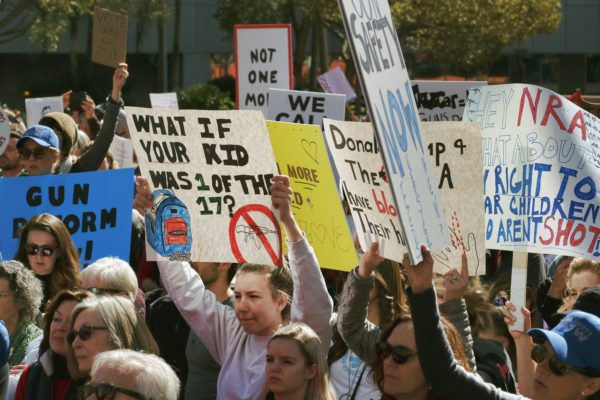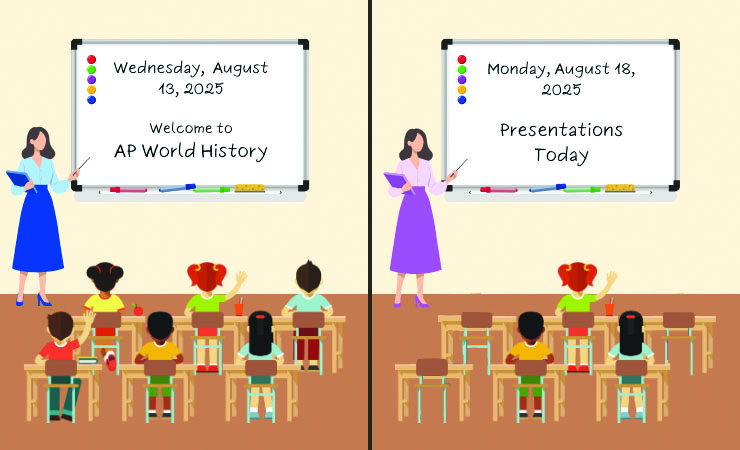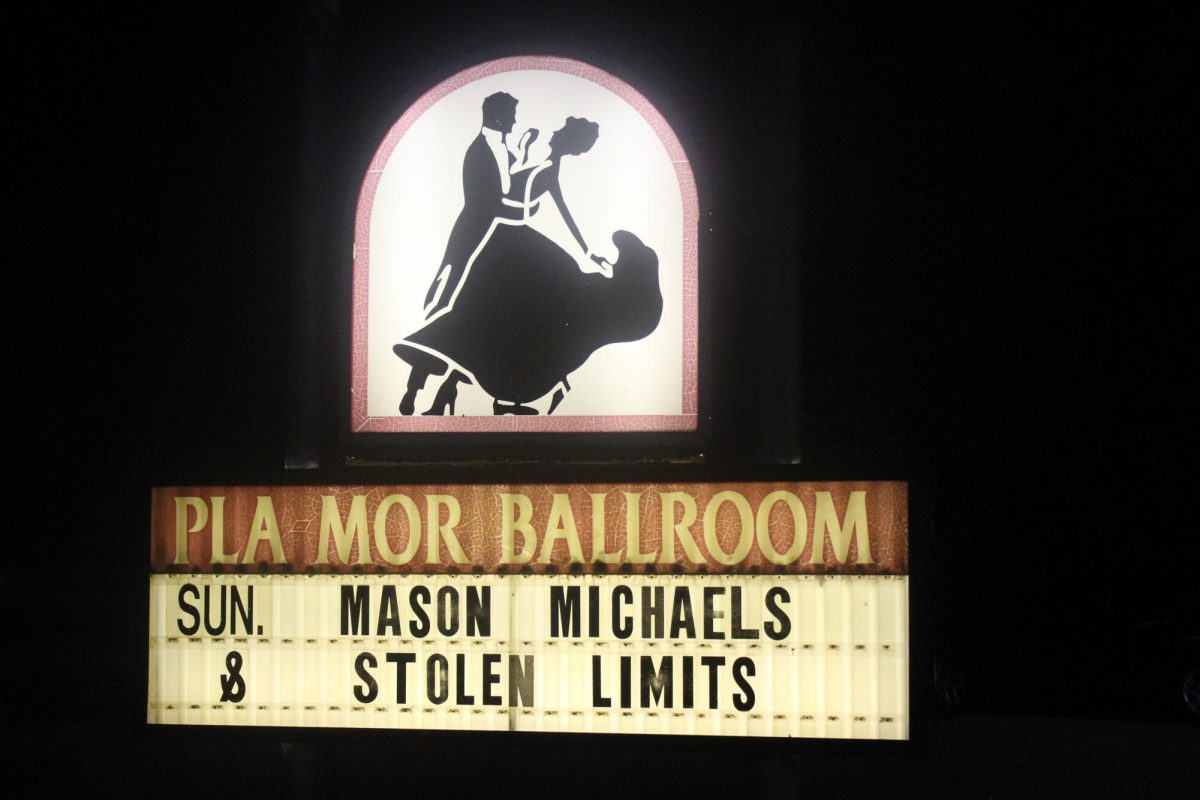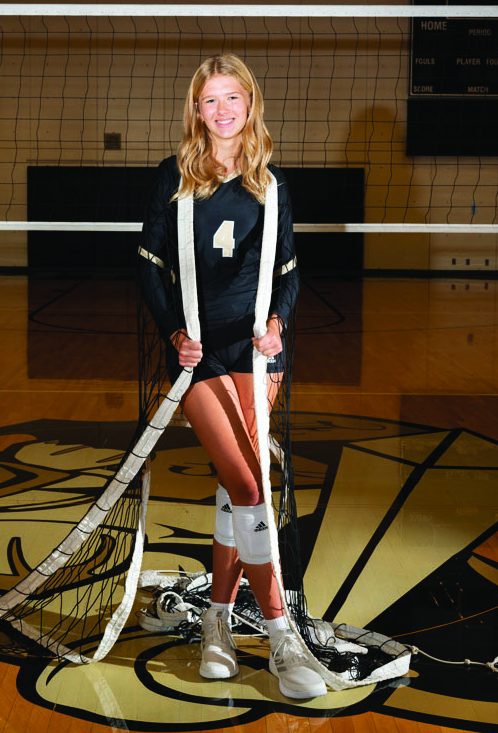What happens when the classroom becomes a battlefield

Protestors join in on a grassroots movement during a rally against gun violence in downtown Los Angeles on Monday, Feb. 19, 2018, in the wake of last week’s school shooting in Parkland, Florida. (AP Photo/Richard Vogel)
March 1, 2018
School shootings have been in and out of the news cycles for far too long now, ever since the first well known one in 1999, the Columbine shooting. It seems that we talk about them, give our thoughts and prayers, then silently wait for the next one to happen. After 17 lives were taken at the Marjory Stoneman Douglas High School shooting in Parkland, FL, students decided to take their lives into their own hands and that enough is enough.
In reaction to the shooting, students are doing more than sending their thoughts and prayers — they were able to get verbal commitments of support from Florida senator Marco Rubio, they pressured Trump to call for a bump stock ban, they led advertisers to leave the National Rifle Association, and have walkouts planned all over the country.
On April 20, 2018, Lincoln high school students have planned to walk out of school in protest of the lack of gun control. Some say it’s extreme, while others don’t think it’ll make a difference, but students feel like they have good reason for trying.
Jada Sundermeier (11) has been following the news after each shooting and is tired of seeing the same thing happen time after time.
“I’m protesting because I’m terrified of walking into my own school. I’m done with looking at all the victims, everyone talks about it for a little while then forgets about it. We’ll bring this up for a couple of days then nothing will change.”
For many kids, even showing up to class has become a challenge.
“Being afraid to walk into my own school is crazy,” said Sundermeier. “I can’t even walk in without thinking, ‘Oh maybe today is going to be the day that it happens.’”
There’s no one answer for how to solve a problem like this one. While lockdown drills and security cameras help, many students don’t feel very much safer, even with those things in place.
“Hiding behind desks, behind walls, is not going to save our lives. Walking out on an active shooter isn’t going to save our lives either. There’s a lot of what-ifs when it comes to that kind of stuff.”
Some people suggest arming security guards and teachers, but many people feel that adding more guns will only make the problem worse. Solutions like metal detectors, which would help keep guns out, could complicate getting into school because they can be set off by many non-threatening things. For now, students will continue to look for answers and raise awareness through things like protests.
“It seems like it’s a really long time away, and in all honesty, April 20th is pretty far away, but if we keep posting on social media, talking about it at school, and spreading it around then it won’t go down the drain. Keep telling people about it, keep people informed about it. This is not something we can push aside because we’ve pushed it for too long and it’s time to change.”








